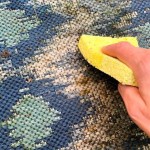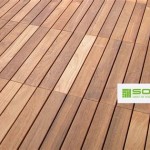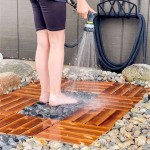Outdoor Rubber Floor Tiles: Essential Considerations
Outdoor rubber floor tiles have become increasingly popular for a variety of applications, ranging from playgrounds to commercial spaces. These tiles offer a host of benefits, including durability, safety, and ease of maintenance. When choosing outdoor rubber floor tiles, it's essential to consider several key aspects to ensure optimal performance and longevity.
Material Composition
The material composition of rubber floor tiles is crucial for determining their durability and performance. Typically, outdoor tiles are made from recycled tire rubber or virgin rubber. Recycled tire rubber is more cost-effective and environmentally friendly, while virgin rubber provides superior elasticity and weather resistance. The percentage of rubber content in the tiles also affects their durability and longevity.
Thickness and Density
The thickness and density of outdoor rubber floor tiles play a significant role in impact absorption and noise reduction. Thicker tiles provide better impact absorption, making them ideal for playgrounds and sports facilities. Denser tiles are more durable and can withstand heavy foot traffic and equipment.
Surface Texture
The surface texture of outdoor rubber floor tiles is essential for safety and traction. Non-slip surfaces are crucial in wet or icy conditions, minimizing the risk of slips and falls. Different textures, such as waffle patterns or studded surfaces, provide varying levels of traction and drainage.
Drainage Capability
Outdoor rubber floor tiles should have excellent drainage capabilities to prevent water accumulation. This is particularly important in areas prone to heavy rain or snow. Tiles with perforated holes or raised surfaces allow water to drain through the tiles, preventing flooding and minimizing the risk of slips.
Interlocking System
Outdoor rubber floor tiles often feature an interlocking system for easy installation and stability. The interlocking edges allow the tiles to be connected securely, creating a seamless surface without gaps or tripping hazards. Different interlocking systems provide varying levels of durability and effortlessness of installation.
Environmental Considerations
When selecting outdoor rubber floor tiles, it's important to consider their environmental impact. Recycled tire rubber tiles are an eco-friendly option as they utilize discarded tires, reducing waste and landfill contributions. Furthermore, some manufacturers offer tiles made from sustainably sourced virgin rubber.
Maintenance and Care
Regular maintenance and care are essential to prolong the life of outdoor rubber floor tiles. Regular sweeping or vacuuming can remove dirt and debris, while occasional power washing can clean deeper stains. Avoid using harsh chemicals or abrasive cleaners, as they can damage the tiles. Additionally, protect tiles from prolonged exposure to direct sunlight, which can cause fading and deterioration.
Conclusion
By considering these essential aspects when choosing outdoor rubber floor tiles, you can ensure optimal performance, safety, and longevity. Whether for playgrounds, commercial spaces, or any other outdoor application, selecting the right tiles based on material composition, thickness, texture, drainage capability, and other factors will provide a durable, safe, and aesthetically pleasing surface that meets your needs.

Outdoor Rubber Pavers 9 Pack Material Warehouse

Outdoor Rubber Flooring

Sterling Roof Top Tile 2 Inch 10 Premium Colors

Eco Sport 3 4 Inch Interlocking Rubber Flooring Tiles

Vevor Interlocking Drainage Mat Floor Tiles Rubber Gym Flooring 12 X 0 5 In 50 Pcs Sq Ft Green Djhzx50pgn0000001v0 The Home Depot

Outdoor Flooring Over Grass Or Dirt Interlocking Tiles

Rubber Cal Eco Sport Interlocking Tiles Coal 3 4 In X 19 5 13 2 Sq Ft Pack 03 208 Web Co The Home Depot

Eco Sport 1 Inch Interlocking Rubber Flooring Tiles

High Density Outdoor Safety Playground Rubber Floor Tile China Made In Com

Flagstone Rubber Pavers Durable Outdoor Floor Surface








